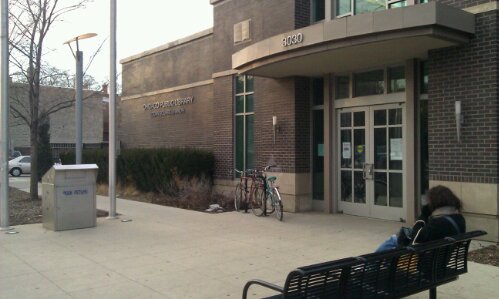Aside from the cold, Minneapolis is a great city to get around by bike. Unlike other cities which have been working hard to add bike lanes, the backbone of Twin Cities bicycle network is its system of off-street paths. Trails around the lakes have existed for decades the spine is the newer Midtown Greenway. Built in an old railroad trench, the greenway ranges from an arterial to a limited access highway, with separate spaces for bikes and pedestrians. It provides a safe, fast and direct route across the city and connects with several other trails. Experienced bicyclists tell me that once the greenway opened bicycling took off everywhere.
I am impressed by how many people are biking through the winter (at least according to the weather it's not spring yet). The city does an overall excellent job of clearing snow from the trails, especially compared to other cities that pretend bikeways are for recreational use only. It's hard to overstate the importance of the trail network: it's easier for new cyclists to get started, more comfortable for everyone, and accommodates all types of bikes and bicyclists. Perhaps most important, when ice and snow are present, I would much rather be on a wet path than with drivers who don't pay attention even in good weather. That's what makes it so casual and peaceful.
In recent years the city has worked to connect the trail network to more neighborhoods and downtown with bike lanes and bike boulevards. Most of these leave a lot to be desired, especially where narrow bike lanes exist on very wide one-way streets, but hopefully the city is learning from its experiments and willing to revisit them.
[gallery ids="911,909,902,913,912,898,897,826,906,914,904,908"]
Another factor is the personal interaction. Apparently many car drivers also bike at least sometimes, probably on trails. (In fact, I wouldn't be surprised in this region has comparatively high rates of recreational biking.) That's the only way I can explain the common occurrence of drivers yielding to me when they are supposed to and even when they are not. I wish I could say the same about riding in other cities.
Have you visited or lived in Minneapolis? Do you share my assessment? Should I move here?



